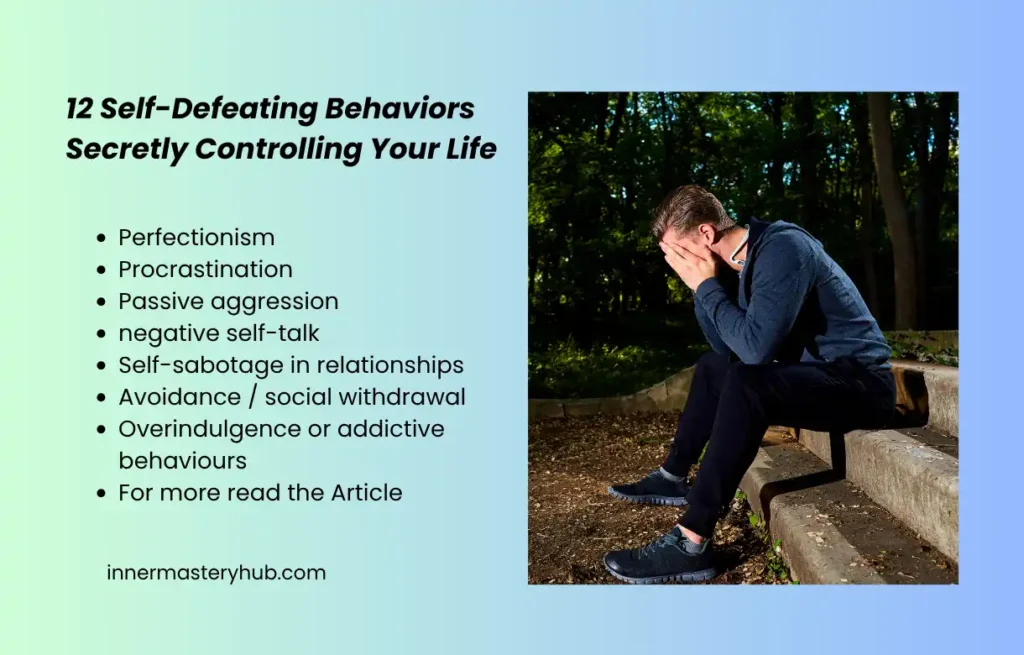Are Signs of Attention-Seeking Behavior a Cry for Help or Manipulation?

We all know someone who seems to crave attention constantly. Whether it’s a friend, family member, or colleague, their actions often leave us wondering: Why do they behave this way? Understanding the signs of attention-seeking behaviour can help you deal with these people more effectively and with more empathy.
In this article, I’ll walk you through the common signs of attention-seeking behaviour, explain why people engage in it, and offer practical solutions to handle these situations. By the end, you’ll have a better understanding of how to identify these behaviours and respond without losing your patience or energy.
Recognizing the signs of Attention-Seeking Behavior
At some point, we’ve all witnessed someone constantly trying to grab attention. You might feel frustrated or even drained by their behaviour, but the problem goes deeper than just seeking validation.
Attention-seeking behaviour is often a symptom of underlying emotional needs or insecurities. It could stem from low self-esteem, a desire for affirmation, or simply the need to feel important in a world where attention feels scarce.
But how do you know if someone’s behaviour is just a cry for attention or something more serious? Recognizing the signs is the first step. Let’s dive into some key indicators of attention-seeking behaviour.
1. Constant Drama or Over-the-Top Reactions
People who exhibit attention-seeking behaviours tend to dramatize situations. They overreact, even to minor issues, in the hope of drawing others’ attention. For instance, a person might exaggerate an everyday problem—turning a mild inconvenience into a full-blown crisis. They might cry excessively or raise their voice to get people to notice them, especially in social settings.
In daily life, you may see this in someone who often blows situations out of proportion. For example, they might make a big deal out of missing a bus or receiving minor criticism. Their goal isn’t always to address the issue, but to attract attention and sympathy.
2. Over-Posting on Social Media
Social media platforms like Instagram, Facebook, and TikTok make it easy for people to seek attention. If you notice someone posting excessively—whether it’s selfies, dramatic stories, or controversial opinions—they may be trying to get noticed. This kind of behaviour can be a way of attracting likes, comments, and followers, which reinforces their need for attention.
For example, they might post pictures of themselves in various outfits, or share personal details about their lives, hoping others will comment or share. It’s a clear sign they’re looking for validation.
3. Interrupting Conversations
Do you have a friend who frequently interrupts during conversations, even when it’s not their turn to speak? This is a classic sign of attention-seeking behaviour. They might want to dominate the conversation to make sure all eyes are on them. Instead of waiting for their moment, they jump in with their own stories or opinions, often steering the conversation to topics that benefit them.
This kind of interruption can be frustrating, especially when it seems like the person isn’t truly listening to others but is only trying to make their voice heard. The behaviour might feel disrespectful or even exhausting for those involved in the conversation.
4. Playing the Victim
Victimhood can be a powerful tool for grabbing attention. People who engage in this behaviour may constantly highlight their misfortunes, even when they’re minor. By portraying themselves as the victim, they may prompt others to console or offer help, which fulfils their need for attention.
For example, someone may frequently talk about how “nothing ever goes right” for them, regardless of the situation. They may exaggerate their hardships to get others to focus on them and offer support.
Why displaying signs of Attention-Seeking Behaviour Can Be Harmful
While attention-seeking behaviour may seem harmless at first, it can lead to significant issues if it continues unchecked. Here’s why it matters:
1. Strains Relationships
When someone constantly seeks attention, it can strain relationships. Friends, family members, and colleagues may begin to feel exhausted by the constant demand for focus. They might start to distance themselves, which can make the person feel even more isolated, perpetuating the cycle of attention-seeking.
For instance, you might find yourself backing away from someone who always dominates conversations or constantly shares negative posts on social media. Over time, this behaviour can push people away rather than bring them closer.
2. Creates Unnecessary Stress
Constantly seeking attention can lead to feelings of stress and frustration. The person may start to feel inadequate when they don’t receive the desired amount of attention, leading to emotional instability. Additionally, the people around them may feel obligated to provide support, creating unnecessary tension.
3. Weakens Self-Esteem
Attention-seeking behaviour may indicate deeper insecurities. While it might seem like the person is boosting their confidence by getting noticed, they could be relying on external validation to feel good about themselves. Without a strong sense of self-worth, they might struggle to maintain healthy relationships or pursue their goals independently.

How to Handle the signs of Attention-Seeking Behavior
If you find yourself dealing with someone who exhibits attention-seeking behaviour, there are ways to address the situation without escalating it. Here are some strategies that might help:
1. Set Boundaries
One of the most effective ways to address signs of attention-seeking behaviour is to establish clear boundaries. This means politely but firmly saying””” when the behaviour becomes too much. For example, if someone interrupts you during a conversation, you could say, “I’d like to finish my point, and then I’ll hear your thoughts.”
Setting boundaries helps the person understand that you value your time and attention, and you won’t tolerate disruptive behaviour.
2. Offer Positive Reinforcement for Healthy Behaviour
When the person exhibits healthier forms of interaction, make sure to acknowledge it. Positive reinforcement can be a powerful tool to shift their behaviour. For example, if they share something interesting or thoughtful without dominating the conversation, compliment them on their insight or contribution.
By reinforcing the behaviour you want to see, you help guide them toward more constructive attention-seeking strategies.
3. Focus on Empathy, Not Sympathy
Instead of indulging in their need for excessive sympathy, offer empathy. Empathy is about understanding their feelings without becoming emotionally drained or overwhelmed.
For instance, if someone is playing the victim, you might acknowledge their struggles while steering the conversation toward solutions. You could say, “I understand that things have been tough lately, but have you thought about [insert possible solution?”
This approach provides emotional support without feeding into their need for attention.
4. Encourage Healthy Communication
Encourage open and honest communication. Let them know you are there for them, but not every issue needs to be exaggerated for attention. Please encourage them to express their feelings directly and calmly. You can even suggest professional help if the behaviour seems deeply rooted in emotional insecurity.
Recognizing and Responding to the signs of Attention-Seeking Behaviour
Understanding the signs of attention-seeking behaviour can help you respond with empathy and clarity. Recognizing the signs—whether it’s drama, excessive social media posts, or constant interruptions—allows you to set boundaries and offer support when necessary.
However, it’s essential to remember that these behaviours are often rooted in deeper emotional needs, and handling them with empathy rather than judgment can help foster healthier relationships.
By setting clear boundaries, reinforcing positive behaviour, and offering solutions, you can address attention-seeking behaviours without allowing them to impact your relationships or well-being.
When you approach the situation with understanding and patience, it becomes easier to navigate these interactions and strike a balance between supporting the individual and protecting your own emotional well-being.
Frequently Asked Questions (FAQs) About Signs of Attention-Seeking Behaviour.
What are the signs of attention-seeking behaviour?
Common signs include excessive storytelling, constant validation-seeking, exaggerated emotions, and provocative conduct. These behaviours often mask underlying issues like low self-esteem or loneliness.
Is attention-seeking behaviour a mental health issue?
It can be. Conditions like histrionic personality disorder, narcissistic personality disorder, and borderline personality disorder often involve attention-seeking behaviours.
How can attention-seeking behaviour affect relationships?
It can strain relationships by creating emotional imbalance, leading to frustration or distancing from others.
What causes attention-seeking behaviour?
Causes include low self-esteem, loneliness, jealousy, and certain personality disorders.
Can children exhibit attention-seeking behaviour?
Yes, children may yell, disobey, or act out to gain attention, often because their emotional needs are not being met.
Is displaying signs of attention-seeking behaviour consistently negative?
Not necessarily. It can be a cry for help or a sign of deeper emotional issues.
How can I address attention-seeking behaviour in others?
Set clear boundaries, offer positive reinforcement for healthy behaviour, and encourage open communication.
Can attention-seeking behaviour be a sign of trauma?
Yes, individuals may seek attention as a way to cope with past trauma or emotional neglect.
How does social media influence signs of attention-seeking behaviour?
Platforms like Instagram and TikTok can amplify attention-seeking behaviours by providing instant validation through likes and comments.
When should I seek professional help for signs of attention-seeking behaviour?
If the behaviour is persistent, disruptive, or linked to underlying mental health issues, consulting a mental health professional is advisable.






